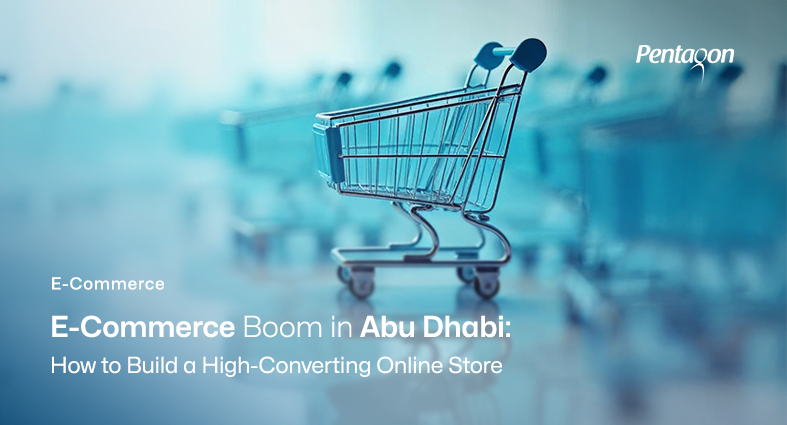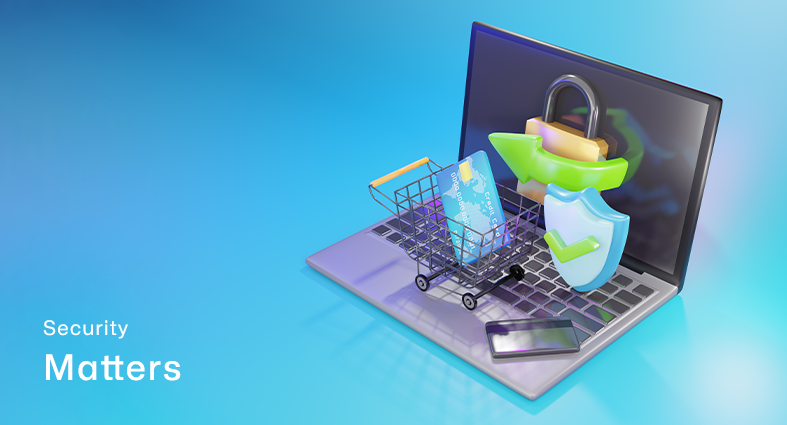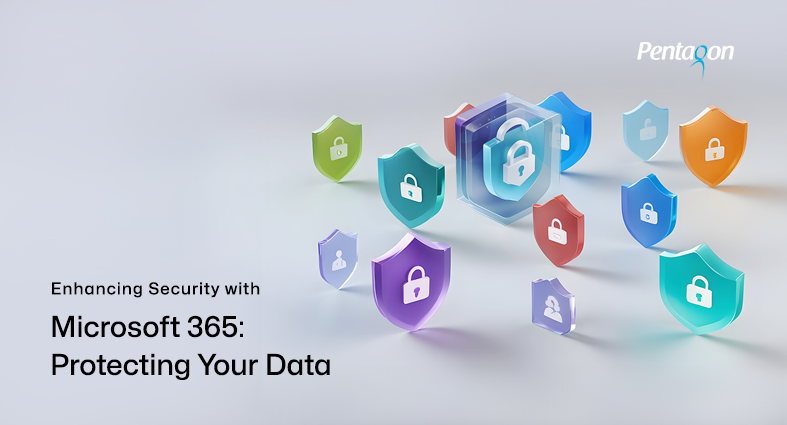Securing your e-commerce website is of paramount importance in today’s digital landscape. Robust website security and secure payment integration are critical factors that contribute to the success and growth of your e-commerce business. With the increasing number of cyber threats and the potential risks associated with online transactions, implementing robust website security measures and ensuring seamless payment integration are essential for the success of your e-commerce venture. In this article, we will delve deeper into the various aspects of e-commerce website security and payment integration. We will explore key measures such as secure hosting, SSL certificates, regular website maintenance, strong password policies, user authentication, web application firewalls, security audits, and compliance with industry standards. By understanding and implementing these essential measures, you can protect your e-commerce business from potential threats and build a strong foundation for long-term success.
Importance of robust website security and payment integration
The importance of robust website security and payment integration cannot be overstated. A secure website instills trust in your customers, encouraging them to make purchases and share their personal and financial details. On the other hand, a compromised website can result in financial losses, reputational damage, and legal consequences. Therefore, investing in website security measures is not only crucial for safeguarding your business but also for building long-term customer relationships. To secure your e-commerce website effectively, it is important to focus on key areas such as secure hosting, SSL certificates, regular website maintenance and updates, strong password policies, user authentication, web application firewalls, and conducting security audits. By implementing these measures, you can significantly reduce the risk of data breaches, hacking attempts, and other security threats.
Payment integration is a critical aspect of e-commerce success. Secure payment processing protocols, compliance with industry standards such as PCI DSS, and integration with trusted payment gateways are vital for ensuring the confidentiality and integrity of customer payment information. By providing a seamless and secure payment experience, you can instill confidence in your customers and minimize the risk of fraud or unauthorized access to financial data.
E-commerce Security Measures
E-commerce security encompasses a range of measures aimed at protecting your website from malicious activities and data breaches. It starts with implementing strong passwords and user authentication protocols to prevent unauthorized access to your website’s admin panel and customer accounts. Regularly updating and patching your website’s software, including your content management system (CMS) and plugins, is crucial for addressing any known vulnerabilities and ensuring a secure environment. Conducting regular security audits and vulnerability scans helps identify potential weaknesses and enables you to take proactive steps to address them.
With the increasing prevalence of cyber threats and the potential risks associated with online transactions, implementing robust security measures is crucial to protect sensitive customer information, maintain trust, and safeguard your business reputation. Here are some essential e-commerce security measures that every online store should implement:
Importance of website security
Website security is vital for e-commerce businesses as it directly impacts customer trust and confidence in making online purchases. Customers expect their personal and financial information to be handled securely during transactions. A secure website ensures that sensitive data, such as credit card details, addresses, and contact information, remains confidential and protected from unauthorized access or malicious activities. By prioritizing website security, you can instill trust in your customers, improve conversion rates, and establish a solid foundation for long-term success.
Implementing strong passwords and user authentication
One of the fundamental security measures is implementing strong passwords and user authentication protocols. Weak or easily guessable passwords can compromise the security of your e-commerce platform. Encourage your customers to create strong passwords that include a combination of upper and lowercase letters, numbers, and special characters. Similarly, for your administrative accounts, use unique and complex passwords that are not shared across multiple platforms. MFA requires users to provide additional authentication factors, such as a verification code sent to their mobile device, in addition to their password, making it more difficult for unauthorized individuals to gain access.
Regularly updating and patching your website’s software
Regularly updating and patching your website’s software is crucial for maintaining a secure environment. Software developers constantly release updates to address security vulnerabilities and bugs that may expose your website to potential threats. It’s essential to promptly install these updates to ensure that your website’s software, including the content management system (CMS), plugins, and themes, is up to date. Outdated software can be a prime target for hackers seeking to exploit known vulnerabilities. By staying current with updates and patches, you reduce the risk of security breaches and strengthen your website’s defenses against potential attacks.
Conducting regular security audits and vulnerability scans
Regular security audits and vulnerability scans are vital components of a comprehensive security strategy. Security audits involve assessing your website’s security posture, identifying potential vulnerabilities, and evaluating the effectiveness of your existing security measures. This process helps you identify areas that may require additional attention and allows you to take proactive steps to strengthen your website’s security. Vulnerability scans, on the other hand, involve using specialized tools to scan your website for known security weaknesses or misconfigurations. These scans help you identify potential entry points for attackers and address vulnerabilities before they can be exploited. By conducting regular security audits and vulnerability scans, you can proactively identify and mitigate security risks, ensuring the continued protection of your e-commerce website and customer data.
E-commerce Payment Integration
E-commerce payment integration is a crucial aspect of running a successful online store. It involves seamlessly integrating secure payment methods into your website to facilitate smooth and hassle-free transactions for your customers. A robust payment integration system not only enhances the user experience but also builds trust and confidence in your online business. Consider factors such as transaction fees, supported payment methods, and ease of integration. Integrating multiple payment options, including credit cards, debit cards, digital wallets, and alternative payment methods, enhances customer convenience and improves conversion rates. Additionally, ensuring PCI DSS (Payment Card Industry Data Security Standard) compliance is essential for handling cardholder data and maintaining the highest level of security in payment processing.
The significance of seamless and secure payment integration
Seamless and secure payment integration is vital for providing a positive purchasing experience to your customers. When the payment process is smooth and efficient, customers are more likely to complete their transactions and return for future purchases. A seamless payment integration ensures that customers can easily navigate through the checkout process without any technical glitches or delays. Security is equally important in payment integration. Customers need assurance that their sensitive payment information, such as credit card details, will be handled securely. Implementing industry-standard security measures, such as encryption and tokenization, helps protect the integrity and confidentiality of customer data during transmission and storage.
Integrating multiple payment options for customer convenience
Offering multiple payment options is essential to cater to the diverse preferences of your customers. By integrating various payment methods, such as credit cards, debit cards, digital wallets, and alternative payment solutions like PayPal or Apple Pay, you provide convenience and flexibility to your customers. Different customers have different preferences, and by offering a variety of payment options, you increase the likelihood of conversion and customer satisfaction. Ensure that the payment options you integrate align with the preferences of your target audience and the regions where you operate. Conduct market research to understand the popular payment methods in your target market and integrate those that are most widely used. This allows you to accommodate the payment preferences of your customers and enhance their shopping experience.
Ensuring PCI DSS compliance for handling cardholder data
Payment Card Industry Data Security Standard (PCI DSS) compliance is crucial for any e-commerce business that handles cardholder data. Compliance with PCI DSS helps protect the security of cardholder information and reduces the risk of data breaches and fraudulent activities. To ensure PCI DSS compliance, it is important to follow the security requirements set forth by the standard. These requirements include maintaining a secure network, implementing robust access control measures, regularly monitoring and testing systems, and maintaining an information security policy. Adhering to these requirements helps protect cardholder data during the payment process and demonstrates your commitment to maintaining a secure environment for your customers.
Implementing secure payment integration systems that meet PCI DSS compliance requirements involves using secure payment gateways, encrypting cardholder data during transmission, and adopting secure coding practices. It is important to regularly review and update your security measures to stay up to date with the evolving threat landscape and ensure ongoing compliance with PCI DSS.
SSL Certificates
SSL certificates are an integral part of website security, particularly for e-commerce businesses that handle sensitive customer information and conduct online transactions. These certificates establish a secure and encrypted connection between a user’s browser and the website they are visiting, ensuring that data transmitted between the two remain confidential and cannot be intercepted by malicious actors. Different types of SSL certificates are available, including domain validation, organization validation, and extended validation certificates. Choosing the appropriate SSL certificate depends on your specific needs and the level of trust and security you want to convey to your customers. Installing and configuring SSL certificates on your e-commerce website is essential to establish a secure connection and display trust indicators such as the padlock icon and “https” in the URL.
Understanding the role of SSL certificates in website security
The primary role of SSL certificates is to provide secure communication and protect data integrity. When a user visits a website secured with an SSL certificate, their browser initiates a secure connection with the website’s server. This connection is established through a process called SSL/TLS handshake, where the server presents its SSL certificate to the browser, and both parties agree on an encryption method. This encryption ensures that any data transmitted, such as login credentials, credit card information, or personal details, remains private and inaccessible to unauthorized entities. SSL certificates also authenticate the identity of the website, assuring visitors that they are interacting with the legitimate and authorized entity they intended to reach. This authentication is crucial in building trust and credibility with customers, as it protects against phishing attacks and impersonation.
Different types of SSL certificates and their benefits
There are several types of SSL certificates available, each offering varying levels of validation and security features:
- Domain Validated (DV) Certificates: These are the most basic SSL certificates and are relatively easy to obtain. They validate the ownership of the domain, ensuring that the website is secured with encryption. DV certificates are suitable for small businesses or personal websites that don’t require extensive validation.
- Organization Validated (OV) Certificates: OV certificates provide a higher level of validation. In addition to validating the domain ownership, they also verify the organization’s identity. This process involves verifying the legal existence of the organization and its physical location. OV certificates are ideal for businesses looking to build trust and credibility with their customers.
- Extended Validation (EV) Certificates: EV certificates offer the highest level of validation and security. They undergo a rigorous verification process, including legal and operational checks, to establish the authenticity of the organization. Websites with EV certificates display the organization’s name prominently in the browser’s address bar, along with a green padlock, indicating the highest level of trust and security. EV certificates are commonly used by e-commerce giants and financial institutions.
Installing and configuring SSL certificates
To install and configure an SSL certificate on your e-commerce website, you first need to acquire a certificate from a trusted Certificate Authority (CA). Many web hosting providers offer SSL certificates as part of their hosting packages, or you can purchase one separately from a reputable CA. Once you have obtained the certificate, the next step is to install it on your web server. The process may vary depending on the server and hosting environment you are using. Generally, it involves generating a certificate signing request (CSR), submitting it to the CA, and obtaining the certificate files. You then need to install the certificate on your server and configure it to work with your website’s domain. Configuring SSL certificates typically involves modifying your website’s server settings or updating the server’s configuration files to enable secure connections. You may also need to redirect HTTP traffic to HTTPS to ensure all communication is encrypted.
Communicating trust and security with SSL indicators
SSL certificates come with visual indicators that communicate to visitors that a website is secure and trustworthy. These indicators include:
- Padlock Icon: When a website is secured with an SSL certificate, most browsers display a padlock icon in the address bar or next to the website URL. This indicates that the connection between the browser and the website is secure.
- HTTPS Protocol: SSL certificates enable websites to use the HTTPS protocol, which replaces the “HTTP” in the website URL with “HTTPS.” The “S” stands for “secure” and signifies that the website has a valid SSL certificate and uses encryption to protect data transmission.
- Green Address Bar (EV Certificates): Websites that have obtained an Extended Validation (EV) certificate display a green address bar in the browser. This visual indicator provides the highest level of assurance to visitors, as it signifies that the website has undergone extensive validation and is operated by a legitimate organization.
PCI Compliance
The Payment Card Industry Data Security Standard (PCI DSS) is a set of security standards established by major credit card companies to ensure the secure handling of cardholder data. The standard applies to any organization that processes, stores or transmits credit card information. Compliance with PCI DSS is crucial for e-commerce businesses as it helps protect sensitive cardholder data and reduces the risk of data breaches and financial losses. PCI DSS consists of a comprehensive set of requirements and security controls that organizations must adhere to. These requirements cover various aspects of security, including maintaining a secure network, protecting cardholder data, implementing strong access control measures, regularly monitoring and testing networks, and maintaining an information security policy.
Steps to Achieve and Maintain PCI Compliance
To achieve and maintain PCI compliance, e-commerce businesses need to follow a series of steps:
- Determine your compliance level: PCI compliance requirements differ based on the volume of credit card transactions processed annually. Businesses are categorized into different levels, and the level determines the specific compliance requirements they must meet.
- Conduct a self-assessment questionnaire (SAQ): The SAQ is a series of detailed questions that assess your compliance with PCI DSS requirements. The questionnaire helps identify any vulnerabilities or gaps in your security practices.
- Perform vulnerability scanning: Vulnerability scanning involves conducting regular scans of your network and systems to identify potential weaknesses or vulnerabilities. This process helps ensure that your infrastructure is protected against known vulnerabilities and security threats.
- Implement necessary security controls: Based on the results of the SAQ and vulnerability scans, you need to implement the necessary security controls to address any identified weaknesses or vulnerabilities. This may include measures such as network segmentation, firewall configurations, encryption, and access control mechanisms.
- Secure cardholder data during transmission and storage: PCI DSS requires businesses to protect cardholder data during both transmission and storage. This involves using encryption technologies to secure data during transmission over public networks and implementing strong access controls and encryption mechanisms to protect data at rest.
Fraud Prevention
Fraud prevention is crucial for protecting your e-commerce business and your customers from fraudulent activities. Implementing robust fraud detection and prevention systems helps identify suspicious transactions and prevent fraudulent orders from being processed. Conducting regular risk assessments and transaction monitoring enables you to identify patterns and anomalies that may indicate fraudulent behavior. Educating your customers about potential fraud risks and precautions, such as recognizing phishing attempts and verifying the security of their transactions, can also contribute to reducing the risk of fraud and building trust.
Fraud prevention is vital for the long-term success of any e-commerce business. By actively working to prevent fraudulent activities, you can safeguard your financial interests, protect your customers’ sensitive information, and maintain a trustworthy reputation. Engaging in proactive fraud prevention measures demonstrates your commitment to providing a secure and reliable online shopping experience. This helps build trust and confidence among your customers, encouraging repeat purchases and positive word-of-mouth recommendations.
Implementing fraud detection and prevention systems To effectively combat fraud, it is crucial to implement robust fraud detection and prevention systems. These systems use advanced algorithms and machine learning technologies to analyze customer behavior, transaction patterns, and various risk factors to identify potentially fraudulent activities. By setting up rules and filters, you can flag suspicious transactions for further investigation and take necessary action to mitigate risks. Additionally, integrating with third-party fraud prevention services and utilizing their expertise can provide an extra layer of protection against fraudulent transactions.
Conducting risk assessments and transaction monitoring
Regular risk assessments and transaction monitoring are essential components of fraud prevention. By analyzing the potential risks associated with your e-commerce operations, you can identify vulnerabilities and implement appropriate countermeasures. Conducting thorough risk assessments helps you understand the specific threats your business may face and allows you to prioritize and allocate resources accordingly. Transaction monitoring involves continuously monitoring customer transactions for any signs of suspicious activity, such as unusually high-value orders or multiple failed payment attempts. Real-time monitoring allows you to quickly detect and respond to potential fraud, minimizing the impact on your business and customers.
Educating customers about potential fraud risks and precautions
Educating your customers about potential fraud risks and precautionary measures is a proactive approach to fraud prevention. By providing information and resources, you empower your customers to protect themselves and their sensitive information while shopping online. Communicate with your customers through various channels, such as your website, blog posts, email newsletters, or social media platforms, to raise awareness about common fraud schemes, phishing attacks, and the importance of secure browsing. Encourage them to adopt best practices, such as using strong passwords, regularly monitoring their financial statements, and reporting any suspicious activities promptly. By fostering a sense of vigilance among your customer base, you create a collaborative environment where both you and your customers work together to prevent fraud.
Secure Payment Gateway
A secure payment gateway is a crucial component of your e-commerce website. It acts as the intermediary between your online store and the financial institutions that handle the payment transactions. When selecting a payment gateway, ensure that it provides advanced security features, such as encryption and tokenization. Encryption ensures that the payment data is securely transmitted, and tokenization replaces sensitive cardholder information with unique identifiers, further enhancing security. Integrating with reputable and trusted payment gateways ensures that your customer’s payment information is handled securely and protects against potential vulnerabilities.
Encryption and tokenization for secure data transmission
A secure payment gateway should employ strong encryption algorithms to safeguard sensitive payment data during transmission. Encryption ensures that the payment information, including credit card details, is encrypted and can only be decrypted by the authorized recipient, ensuring that it remains confidential and secure. Tokenization is another crucial security measure employed by payment gateways. It replaces the actual payment card data with a unique token. This token is used to represent the card information during transactions, reducing the risk of sensitive data exposure. Even if a breach occurs, the tokenized data is useless to hackers as they cannot reverse-engineer it to obtain the original card details.
Ensuring secure payment processing and data storage
A secure payment gateway should offer secure payment processing to protect against unauthorized access or tampering. It should handle the payment transaction securely, validating the transaction details and securely transmitting the payment information to the acquiring bank for processing. Furthermore, the payment gateway should adhere to strict data storage practices. Cardholder data should never be stored on your e-commerce website or database. Instead, the payment gateway should securely store the customer’s payment information in compliance with PCI DSS requirements. This ensures that even if a security breach occurs on your website, customer payment data remains protected.
Integrating with reputable and trusted payment gateways
It is crucial to integrate your e-commerce website with reputable and trusted payment gateways. Opt for well-established payment gateways that have a proven track record in the industry. These gateways often have robust security measures in place and are more likely to offer reliable and secure payment processing services. Before choosing a payment gateway, consider factors such as transaction fees, supported payment methods, ease of integration, and the reputation of the payment gateway provider. Research customer reviews and feedback to ensure that the payment gateway has a positive reputation for security, reliability, and customer support.
E-commerce Security Best Practices
In addition to the specific measures mentioned above, following e-commerce security best practices is essential for maintaining a secure online store. Regularly backing up your website and database ensures that you can restore your data in case of a security incident or system failure. Using strong and unique passwords for all accounts, including administrative accounts and customer accounts, adds an extra layer of protection against unauthorized access. Restricting access to sensitive areas of your website, such as the admin panel or customer databases, helps prevent unauthorized individuals from gaining access to critical information. Educating your employees about security practices and protocols ensures that everyone involved in the operation of your e-commerce business understands their roles and responsibilities in maintaining security.
E-commerce websites face various security threats, ranging from data breaches to malicious attacks. Implementing best practices for security can help safeguard your online store and protect sensitive customer information. Consider the following essential e-commerce security practices:
Regularly backing up your website and database
Regular backups are crucial for mitigating the risk of data loss and facilitating swift recovery in case of security incidents or system failures. Schedule automatic backups of your website files and databases, ensuring that they are stored securely in offsite locations or cloud storage. Test the backup restoration process periodically to ensure its reliability. In the event of an attack or technical failure, backups allow you to restore your website to a previous secure state.
Using strong and unique passwords for all accounts
Passwords are the first line of defense against unauthorized access. Use strong and unique passwords for all user accounts associated with your e-commerce platform, including administrative accounts, customer accounts, and any third-party integrations. Strong passwords should be complex, incorporating a combination of uppercase and lowercase letters, numbers, and special characters. Avoid using common words, personal information, or easily guessable patterns. Additionally, consider implementing multi-factor authentication (MFA) to add an extra layer of security.
Restricting access to sensitive areas of your website
Limiting access to sensitive areas of your website, such as the admin panel, server configurations, and customer databases, helps prevent unauthorized individuals from gaining control or accessing critical information. Utilize strong access controls and permission settings to ensure that only authorized personnel can access sensitive areas. Implement role-based access control (RBAC) to grant specific privileges based on job roles and responsibilities. Regularly review and update user permissions to remove unnecessary access rights.
Educating employees about security practices and protocols
Employee awareness and understanding of security practices are vital for maintaining a secure e-commerce environment. Conduct regular training sessions to educate your employees about security threats, best practices, and protocols. Train them to identify and report suspicious activities, such as phishing attempts or social engineering attacks. Encourage the use of secure practices, such as logging out after each session, not sharing passwords, and being cautious with email attachments and links. By promoting a culture of security awareness, you empower your employees to actively contribute to the protection of your e-commerce store.
Conclusion
Securing your e-commerce website and ensuring the seamless integration of payment systems are essential for the success of your online business. By implementing robust security measures, such as user authentication, regular updates, and security audits, you can protect your website from potential threats and data breaches. Seamless payment integration, supported by SSL certificates, PCI compliance, and secure payment gateways, enables you to provide a trustworthy and convenient payment experience to your customers. By following e-commerce security best practices, you can safeguard your business, protect customer information, and foster trust and loyalty in the competitive e-commerce landscape. Transform your online store with our expert E-commerce Development Services. From secure website design to seamless payment integration, Pentagon has you covered. Drive sales, enhance user experience, and boost your online presence. Don’t miss out on maximizing your e-commerce success. Contact us now for a consultation!
services
Feel free to send us a message.
Please, share your thoughts, and let's chat over a cup of tea.



















